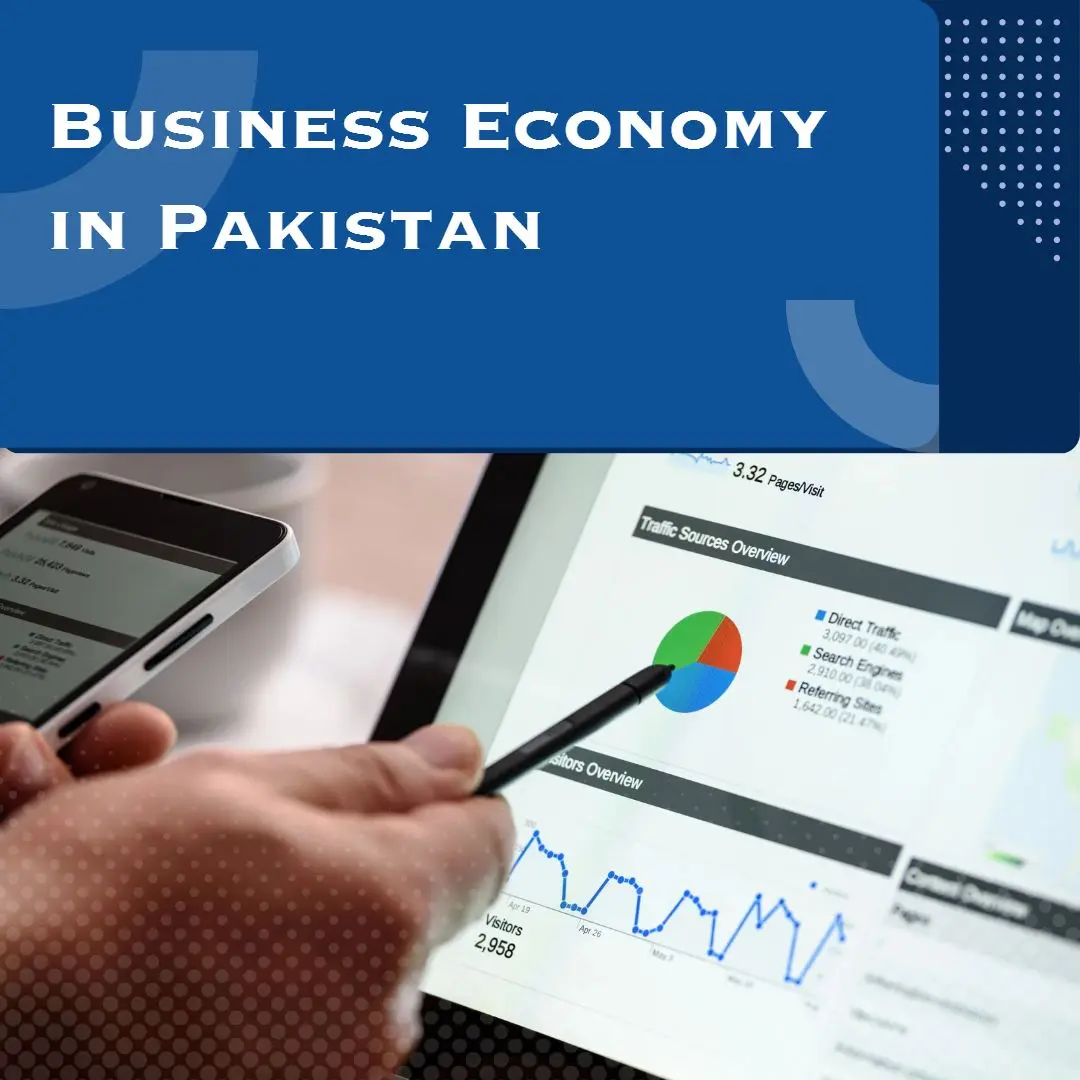
Pakistan's Economic History 1947 To 2023 And GDP Growth Rate
Introduction:
- Pakistan's economic journey since its independence in 1947 is a tale of significant highs and lows. This journey reflects the country's efforts to establish a robust economy and various internal and external challenges. From its early days of nation-building to the present-day economic landscape, Pakistan's GDP growth rate has seen dramatic shifts influenced by political, social, and global factors. This blog provides a comprehensive overview of Pakistan’s economic history from 1947 to 2023, focusing on the key events and trends that have shaped its GDP growth rate.

The Early Years (1947-1960)
Initial Challenges
- After gaining independence in 1947, Pakistan faced immense economic challenges, including partition-related displacement, lack of an industrial base, and the need for infrastructure development. The early years by efforts to stabilize the economy and build foundational industries.
Economic Policies
- The government implemented import substitution policies to promote industrialization. The focus was on developing sectors like textiles, agriculture, and small-scale industries. Despite these efforts, economic growth was modest due to limited resources and infrastructure.
The Era of Rapid Growth (1960-1970)
Green Revolution
- The 1960s marked a period of rapid economic growth, often referred to as the "Decade of Development." The Green Revolution introduced high-yield crop varieties and improved agricultural practices, significantly boosting agricultural productivity.
Industrial Expansion
- The government promoted industrialization through favorable policies, attracting foreign investment, and establishing large-scale manufacturing industries. This period saw an average annual GDP growth rate of around 6-7%.
Economic Challenges and Stagnation (1970-1980)
Nationalization Policies
- The 1970s brought economic challenges, including political instability and the loss of East Pakistan (now Bangladesh). The government, led by Zulfikar Ali Bhutto, implemented nationalization policies, which adversely affected industrial productivity and private sector confidence.
Stagnant Growth
- The economy experienced stagnation during this decade, with a decline in industrial growth and an average GDP growth rate of around 3-4%. Efforts to revive the economy were hampered by political turmoil and policy inconsistencies.
The Structural Adjustment Era (1980-1990)
Liberalization and Reforms
- In the 1980s, Pakistan embarked on a path of economic liberalization and structural adjustment, guided by policies recommended by the International Monetary Fund (IMF) and the World Bank. These reforms aimed to stabilize the economy, reduce fiscal deficits, and encourage private sector growth.
Mixed Results
- While these reforms brought some stability and improved economic indicators, the GDP growth rate remained uneven due to external debt burdens and socio-political challenges. The average annual GDP growth rate during this period was around 5-6%.
Economic Sanctions and Recovery (1990-2000)
Nuclear Sanctions
- The 1990s were marked by economic sanctions imposed after Pakistan's nuclear tests in 1998. These sanctions led to economic isolation, reduced foreign investment, and a slowdown in growth.
Structural Reforms
- Despite these challenges, the government continued with structural reforms, privatization of state-owned enterprises, and financial sector liberalization. These efforts laid the groundwork for economic recovery in the late 1990s.
The Musharraf Era and Economic Boom (2000-2008)
Economic Revival
- Under President Pervez Musharraf, Pakistan experienced an economic revival with significant reforms in the financial sector, increased foreign investment, and robust economic policies. The GDP growth rate peaked at around 7-8% in the mid-2000s.
Infrastructure Development
- The government invested heavily in infrastructure projects, including highways, ports, and energy projects, contributing to sustained economic growth and improved investor confidence.
The Global Financial Crisis and Aftermath (2008-2018)
Economic Slowdown
- The global financial crisis of 2008 had a significant impact on Pakistan’s economy, leading to a slowdown in growth. High inflation, energy shortages, and security challenges further exacerbated economic difficulties.
Structural Challenges
- Efforts to stabilize the economy through IMF programs and structural reforms faced mixed results. The GDP growth rate fluctuated between 3-5% during this period, reflecting underlying structural challenges and policy inconsistencies.
Recent Developments and Current Trends (2018-2023)
Economic Reforms
- The government has focused on economic reforms, improving the business environment, and tackling fiscal deficits. Initiatives like the China-Pakistan Economic Corridor (CPEC) have been pivotal in driving infrastructure development and economic growth.
COVID-19 Impact
- The COVID-19 pandemic severely impacted Pakistan’s economy, leading to a contraction in GDP and increased fiscal deficits. However, the economy showed resilience with a rebound in 2021-2022, driven by strong agricultural performance and recovery in the services sector.
GDP Growth Rate Trends
- Historical Perspective
- Pakistan's GDP growth rate has seen significant fluctuations over the decades:
- 1960s: High growth rate of 6-7% due to industrialization and agricultural productivity.
- 1970s: Decline to 3-4% amid political instability and nationalization.
- 1980s: Moderate growth of 5-6% with structural adjustments.
- 1990s: Mixed growth with periods of recovery and stagnation, averaging around 4-5%.
- 2000s: Peak growth of 7-8% during the Musharraf era.
- 2010s: Fluctuations due to global financial crisis impact and structural challenges, averaging 3-5%.
Recent Trends
- From 2018 to 2023, Pakistan's GDP growth has faced significant challenges:
- 2018-2019: Slowed growth due to economic imbalances and structural reforms.
- 2020: Contraction due to the COVID-19 pandemic.
- 2021-2022: Recovery with a growth rate of around 4-5%, driven by agriculture and services sector rebound.
Conclusion
- Pakistan's economic history from 1947 to 2023 is a testament to its resilience and adaptability in the face of numerous challenges. The GDP growth rate has been influenced by various factors, including political changes, global economic trends, and domestic policy decisions. Moving forward, sustained economic growth will depend on continued structural reforms, investment in infrastructure, and effective management of external challenges.
Frequently asked questions (FAQs)
- 1. How has Pakistan's economy evolved since its independence in 1947?
- Answer: Since gaining independence in 1947, Pakistan's economy has undergone significant changes. Initially, the country faced major challenges as partition-related displacement and a lack of industrial infrastructure. The 1960s saw rapid economic growth due to industrialization and agricultural advancements. However, the 1970s brought stagnation due to nationalization policies. The 1980s and 1990s focused on structural adjustments and economic reforms, while the 2000s experienced a boom under President Musharraf.
- 2. Pakistan's economic growth in the 1960s?
- Answer: The 1960s, the "Decade of Development," saw significant economic growth in Pakistan, driven by the Green Revolution, which introduced high-yield crop varieties and improved agricultural practices. Additionally, the government promoted industrialization through favorable policies, attracting foreign investment and establishing large-scale manufacturing industries. These efforts led to an average annual GDP growth rate of 6-7%.
- 3. How did the nationalization policies of the 1970s affect Pakistan's economy?
- Answer: The nationalization policies implemented by the government in the 1970s, particularly under Zulfikar Ali Bhutto, hurt Pakistan's economy. These policies led to the nationalization of key industries, which disrupted industrial productivity and eroded private sector confidence. As a result, economic growth slowed, with the GDP growth rate declining to around 3-4%. The economy faced stagnation due to policy inconsistencies and political instability.
- 4. The main economic challenges faced by Pakistan during the 1990s?
- Answer: The 1990s were marked by several economic challenges for Pakistan, including the imposition of sanctions following nuclear tests in 1998, which led to economic isolation and reduced foreign investment. Additionally, the country grappled with high inflation, fiscal deficits, and political instability. Despite ongoing structural reforms and privatization efforts, the GDP growth rate fluctuated and remained modest, averaging around 4-5%.
- 5. How has the COVID-19 pandemic affected Pakistan's economy and GDP growth rate?
- Answer: The COVID-19 pandemic had a significant impact on Pakistan's economy, leading to a contraction in GDP in 2020. The pandemic caused disruptions in trade, reduced industrial activity, and increased fiscal deficits. However, the economy showed resilience and began to recover in 2021-2022, with an estimated GDP growth rate of around 4-5%. This recovery was driven by performance and a rebound in the services sector, reflecting the country's efforts to adapt to the new economic challenges posed by the pandemic.

.webp)
.webp)
.webp)
.webp)



